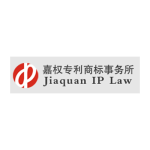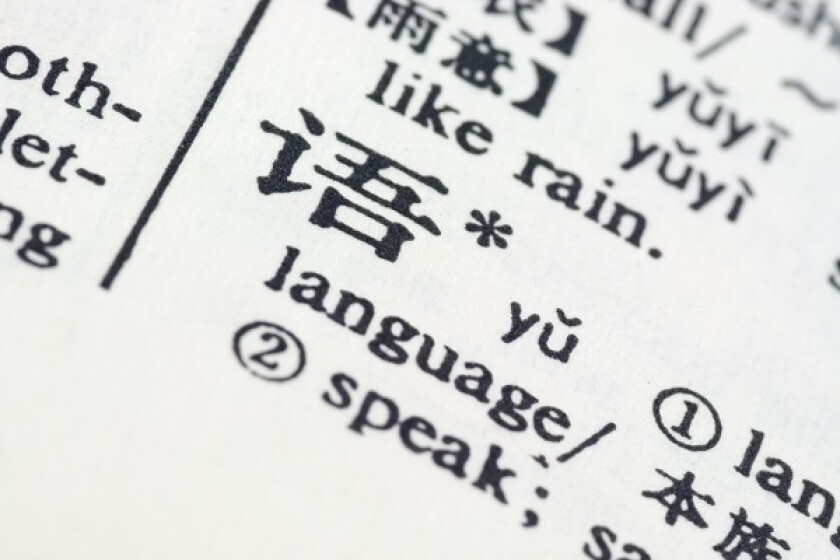Background
With China's rapid economic growth, more and more foreign companies are anxious to move into China's immense market and have invested more in long-term technology and business development in China than ever before. As part of such increasing investments, foreign companies have filed more and more patent applications in China. According to the China National Intellectual Property Administration (CNIPA), the number of foreign patent applications in China continued to increase in 2019, with 157,000 invention patent applications, an increase of 6.0% over the previous year. All of these foreign patent applications have to be translated into Chinese. Consequently, translation agencies and law firms in China and abroad have trained a large number of translators to meet these vast translation needs.
Considering the labour cost and the technical expertise required for translating patent documents, foreign law firms usually draft a patent application in the local language and entrust a translation agency or law firm in China to translate it into Chinese. The process of a foreign patent application entering China usually consists of four steps: (i) drafting patent application by a foreign patent attorney; (ii) translating the whole text by a translator of a Chinese law firm; (iii) reviewing by the proofreader of the Chinese law firm; (iv) filing patent application by the Chinese law firm. Obviously, the competence of the translator and the quality of translation together have a crucial impact on a patent applications in China. A high-quality and accurate translation that is faithful to the original text, clear in expression, logically rigorous, and fluent in writing, will enable the readers (including the patent examiner) to have a clear and full understanding of the original text easily. In contrast, a poor translation may lead to misunderstanding on behalf of the patent examiner and obstacles to patent prosecution. The discrepancies may greatly affect the future of the patent application, not only the possibility of being granted a patent, but also the enforceability of the patent granted.
Common challenges in patent translation
Patent translation has always been one of the challenges in the field of translation. During the translation process, both the translator and proofreader have to understand the technical content fully and convert it into Chinese accurately and professionally. Therefore, this process requires a much higher standard than a mere literal translation. Some common challenges in patent translation are summarised below based on our years of practical experience.
Grammar
For all kinds of patent documents, a qualified translator should master grammar in order to achieve an accurate translation. Since the quality of the translation will affect the entire life cycle of the patent, it should be treated rigorously from the very beginning by accurate grammatical deconstruction of a sentence for an initial and basic understanding of the sentence. This is the foundation of a well-structured translation.
Terminology
When translating a patent application document, it is very important for the translator to develop a comprehensive glossary of terms specific to the technology. The translator can get help from web-based dictionaries or professional dictionaries to determine the meaning of technological terms. Such dictionaries can provide multiple definitions of a specific term for the translator to choose from. However, each specific technical field usually has a corresponding terminology library, and the same word may have different meanings in different fields. For example, the meaning of "spacer" or "washer" is a commonly used and standardised mechanical connector in the shape of an annular dish. In another technical scenario, "spacer" may mean a customised mechanical component for spacing in the shape of a cylindrical tube. Therefore, the challenge for the translator is to identify the best definition for the specific invention based on his/her knowledge and experience.
Phrase
Chinese is a discrete language. When a word is taken from one sentence and placed in another sentence, the literal meaning of such a word generally does not change. One of the biggest differences between English and Chinese is that English is composed of rich and flexible phrases. A phrase contains a group of words that express a concept and is used as a unit within a sentence. If a phrase is translated word-by-word without looking at how the words are used together in a phrase, the translation may deviate from the original meaning, and such a translation may affect the clarity of claims.
Sentence
A patent application usually contains a large number of long sentences. Too many components and clauses in long sentences may easily cause an ambiguity in understanding that leads to an incorrect translation. Sentence segmentation is one of the effective ways to avoid ambiguity. However, the translation cannot be correct or accurate if the logical relationship among the component sentences is misinterpreted. In addition, the sentence segmentation itself may also cause mistakes. Translators should avoid interpreting sentences or dissecting sentences simply by grammatical rules, since not every sentence can be segmented and understood by grammatical rules alone.
Fluency
Ordinary documents only require legibility and elegance. For a patent document, lack of fluency may cause problems such as unclear meaning or ambiguity. In particular, the problem of fluency in the description of key inventive points or technical effects may lower the chances of the patent being granted and create validity/enforceability risks for the patent.
Patent law adaptation
When a foreign applicant enters China via the PCT or Paris Convention, the patent application document has to comply with Chinese Patent Law. For example, the formality and patentable subject matters have to be considered by the translator/proofreader. Formality problems will lead to additional corrections during the examination of the patent application. The patent eligibility problems may make the invention non-patentable. According to the Chinese Patent Law, non-patentable subject matters include, but are not limited to, mental rules, medical treatments, and lottery subjects.
Strategies to overcome the challenges
Aiming to translate patent documents professionally and accurately, our firm has developed the following strategies to overcome the challenges above.
Grammar
Translation proficiency requires strong knowledge of grammar and industry-specific vocabulary. Only qualified and well-trained personnel will be asked to translate patent applications. Being a patent translator requires both a bilingual background and scientific expertise.
Terminology
The translator should have strong knowledge of the specific industry and should understand the entire technical solution as a whole in order to translate each term accurately. Working on new technologies, the translator should combine various learning approaches to understand the technical terms correctly, especially the terms that are critical to the description of the technical solutions and technical effects of the invention, including specific structures, principles, and attributes. Firstly, the translator should study the patent application document carefully and develop a good understanding of different sections, including drawings, definitions, embodiments, and technical scenarios. The translator should also understand the context of these sections. Secondly, translators are also encouraged to use tools online and consult other experts to enrich their knowledge. Thirdly, translators should consider maximising the patent protection scope with the translation. Appropriate and broader interpretations could be helpful for broader patent claims.
Phrase
Phrase has to be translated as a whole rather than a mere combination of word-by-word translations. It also should be translated in the context of the sentence. A translator should understand the technical content first, then interpret the meaning of a specific phrase in the context, and finally translate it into Chinese properly.
Sentence
Many translators use CAT (Computer Aided Translation) software to help them on translation projects. However, machine memory cannot guarantee translation quality. Proficient translators also use their own memory to enhance the accuracy of their translation. While translating, they memorise the parts translated and use the same principles and logic to translate the remaining parts. In this way, the entire technical solution can be translated in a coherent manner. If they notice that they have misunderstood certain parts, they can immediately go back and correct them or take notes for later batch corrections.
Fluency
Translators should hone their written skills in Chinese, to be accurate, fluent, unambiguous, and compliant with Chinese reading habits.
Patent law adaptation
A patent translator should be familiar with Chinese Patent Law and have patent drafting experience. Translators should apply their legal knowledge and experience to their translation projects to ensure their compliance with the Chinese Patent Law. Whenever a translator finds any content that does not comply with the Patent Law, he/she can communicate with the applicant in time to make necessary amendments and avoid potential risks.
Proofreading
After meeting all the requirements above, the draft translation should also be reviewed by a proofreader as a necessary step for quality control. The proofreader compares the entire original text with the translated text to ensure the patent application is accurate, fluent, and patent eligible. Sometimes, the translator may not be a patent agent or attorney. However, the proofreader has to be a legal practitioner who has extensive knowledge of the Chinese Patent Law and experience in patent drafting. Proofreaders should also be a master of all the countermeasures above to prevent inaccurate translation.
Real-time training
Aiming to provide a high-quality service to our clients, we have adopted a real-time training procedure to monitor and improve our translators' performances in addition to our systematic training programme. Proofreaders have been assigned as training instructors for our translators. They provide real-time feedback to translators on their projects. Different types of defects are colour-coded and text annotations are added for explanation and clarification. This practice has been very helpful for our translators to correct errors and improve their translation skills. Enhanced communication between our proofreaders and translators also ensured that the final translations are of outstanding quality.
One piece of advice
Although we are endeavouring to file patent translations quickly, we do not ask our translators to pursue speed at the cost of quality. At the beginning, our translators may spend hours or days understanding the invention and generating a comprehensive glossary of terms specific to the project. During the translation process, our translators may spend considerable time interpreting a single sentence accurately. We believe the effort is worth it. In addition to enhancing the translation quality, this practice also helps our translators to accumulate valuable technical knowledge and translation experience. As a result, their work efficiency has increased continuously.
For both applicants and patent practitioners, the accuracy and quality of patent document translation should be highly valued. Good translation can make the process of patent prosecution smoother, increase the possibility of acquiring broader claims, and enhance the enforceability of the future patent. All the investments in quality control will pay off during the entire life cycle of the patent. Law firms dedicated to providing excellent translation services can create tremendous value for their clients.

Mark Weifeng Lin
Mark Weifeng Lin is the manager of the international department at Jiaquan IP Law. He graduated from Guangdong University of Technology in 2004 with a major in electronics and software and previously worked for an electronics enterprise. Since joining Jiaquan, he has worked on patent drafting, obtaining patents, patent evaluation, and related client advice. He focuses on matters connected to computer science, communications, software, business methods, and electronics. He also frequently handles patent searches and analyses. In 2018, Lin worked as an exchange patent attorney in a boutique intellectual property firm in the US.
Lin is in charge of the firm's patent translation quality as well as related training programmes. He has published several articles on patent translation and given more than 10 speeches on various occasions in China and abroad.
Lin has represented a number of clients, including ZTE, Midea and General Motors.











